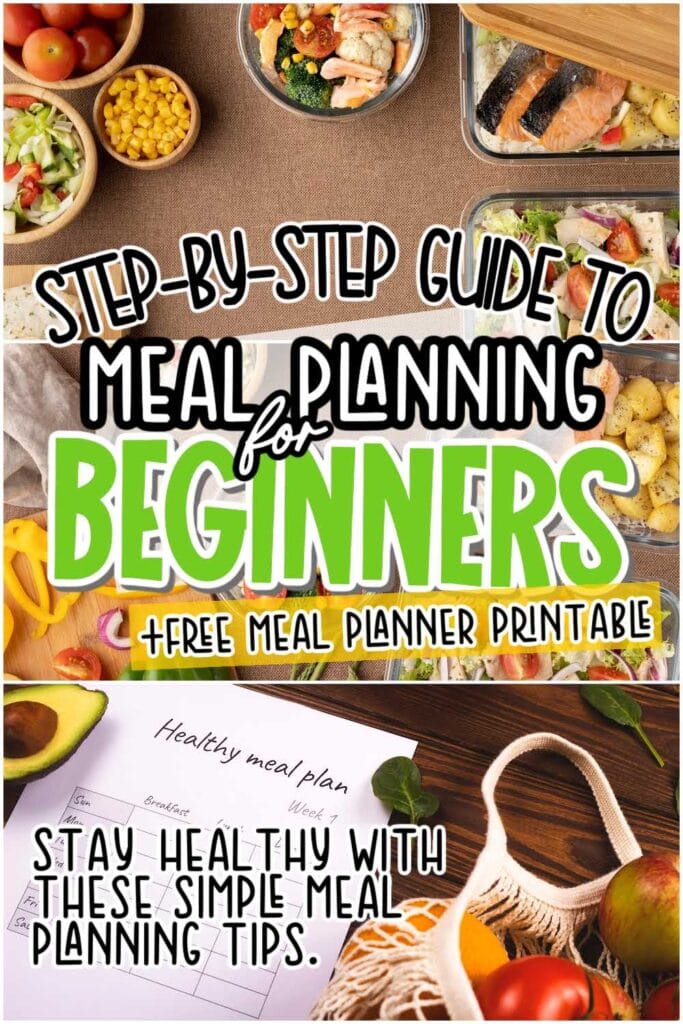Step-By-Step Guide to Meal Planning for Beginners
Disclosure: This post may contain affiliate links. When you click on a link and/or make a purchase, I may be paid a small commission at no additional cost to you. Additionally, as an Amazon Associate I earn from qualifying purchases. Please read my Disclosure page for more information.
Save time (and money) in the kitchen with this guide to meal planning for beginners. Because there’s nothing better than going into your week feeling organized and ready to tackle the days ahead!
Meal planning, or coming up with meals in advance, is a quick way to save time throughout the week. You’ll also be more efficient with your grocery shopping, which helps you save money.
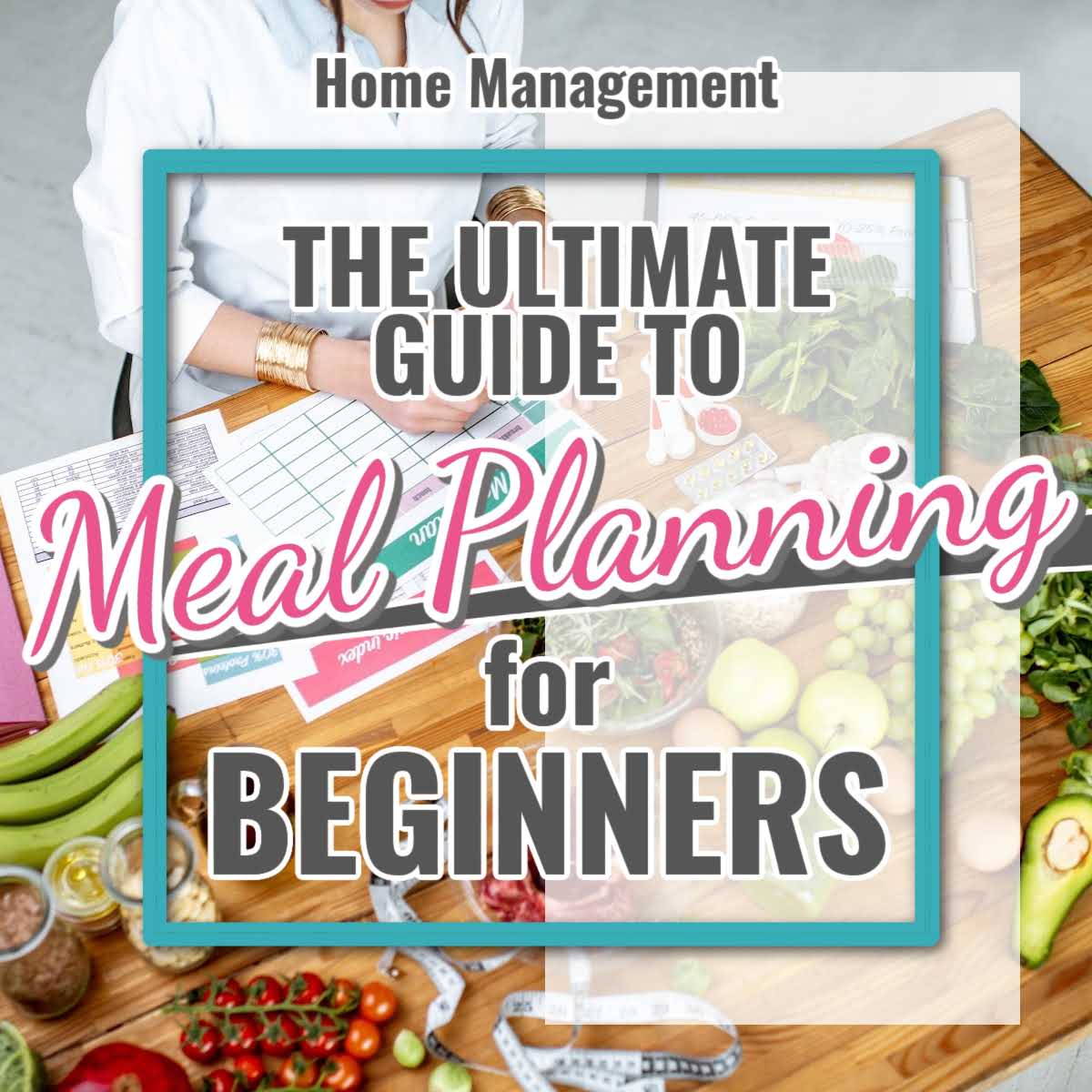
This basic meal planning technique is designed to get you jump-started in the habit of planning your weekly meals in advance. That way you don’t have to think about what’s for dinner while you’re trying to juggle 50 other obligations.
Eat out less and save money with these simple meal planning tips.
What are the key points for beginner meal planners?
Meal planning is easier if you remember these 3 key principles:
- Simplicity means starting with easy recipes that can be prepared with minimal ingredients.
- Balance refers to selecting meals that cover the major food groups like proteins, carbohydrates, vegetable, fruits, and fats.
- Variety is essential to keep meals interesting and avoid monotony.
8 Steps to Meal Planning for Beginners
If you don’t currently plan meals, it can be a little tough to get started. But remember, meal planning is not about perfection but about making home-cooked meals more manageable.
This simple guide to meal planning will help you get the ball rolling. We’ll cover the following steps for meal planning success:
- Basic meal planning for beginners
- Creating an easy meal plan with my free printable meal planner
- How to balance a busy schedule with simple meal planning
- Adding a personal touch
- Creating a budget-friendly grocery list
- Building up to more advanced meal planning techniques
1. Keep Menu Planning Simple
The key to successful meal planning is to keep things simple. When you’re just getting started with meal planning, focus on dinners only. You can add in different meals like breakfast, lunch and snacks after you get the hang of it.
Create a list of easy recipes you want to make for the following week. Don’t over-complicate things with complex meals or a confusing game plan. Simply write down a few easy-to-make dinners for the week – ones that require a handful of ingredients and can be prepared in 30 minutes or less are best.
If you’re struggling to come up with ideas, think about any quick-and-easy meals you currently make. And peep the fridge, freezer, and pantry for ideas about how to use up ingredients you already have.
Don’t forget to throw in a family favorite (or a dish you enjoy cooking) to make this simple meal planning process easier.
Easy Weeknight Dinner Ideas:
- Taco Soup
- Ground Beef Philly Cheesesteak Sliders
- Easy Crockpot Chicken and Dumplings with Canned Biscuits
- Old Fashioned Sloppy Joes {Stove Top & Crock Pot}
- Open Faced Tuna Melts {Broiled or Baked)
2. Write it Down with this Printable Free Weekly Meal Planner
In order to make your life super-simple, I created this amazing free printable meal planner. This super-easy guide keeps you organized as you learn how to meal plan.
Simply write down the dishes you’re making for the week and note any days where you’ve got a tight schedule. And don’t forget to include a night out – just work it into the schedule.
The key to basic meal planning is to keep things easy to understand so you’re on top of your game – even when you’re juggling the chaos of everyday life.
Follow these simple steps and set aside time for weekly meal planning. Your future self will thank you!
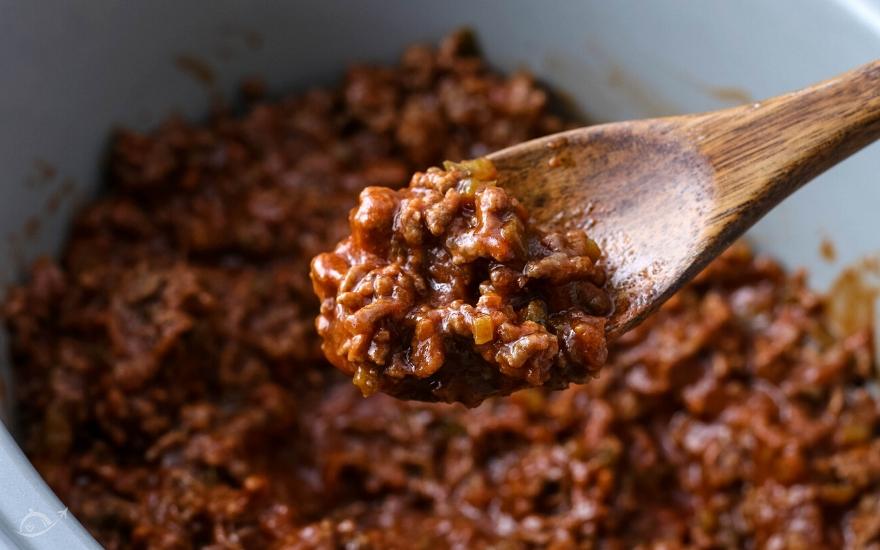
3. Be Realistic About Your Schedule & Time
When it comes to planning the menu, don’t forget to think about your family’s schedule. One of the biggest mistakes that beginners make is to forget about a busy evening. And if you have commitments where you know you won’t be home for dinner, be sure to enter them on the planner first so you can work around them.
You don’t want to make a big, complicated meal the day you’re running around to soccer practice and a violin lesson. Instead, pick easy meals for busy days.
Utilize tools like a crockpot, an Instant Pot, or plan a family night out on ultra-busy days. However, don’t go overboard with eating out. The point of meal planning is to eat more home-cooked meals. So try to limit going out to just once a week.
Shortcuts to Get Dinner on the Table
- If you’re new to cooking or short on time, take advantage of pre-cooked proteins. It’s an easy way to save time and it’s cheaper than eating out or hitting up the fast food drive-thru lane.
- Grab a rotisserie chicken and use the meat for 2 dinners. Or purchase refrigerated or frozen grilled chicken strips to add to tacos or a main dish salad.
- Take the burden off of yourself by integrating a leftover night into your weekly meal plan. You’ll have a night off from cooking and waste less food when you eat dinner leftovers.
- Some recipes require an overnight marinade or soaking of an ingredient. I make a note of this right on the printable planner so I can anticipate any prep work I may need to do the night prior.
I love to try new recipes from cookbooks and blogs, as well as experiment on my own. However, the last thing I want to do is tear through the kitchen, trying to remember what cookbook I used to make my meal plan.
If you like to use cookbooks, write down the name of the book and page right on your meal plan. Keep the book out on the kitchen counter if possible so you can reach it quickly.
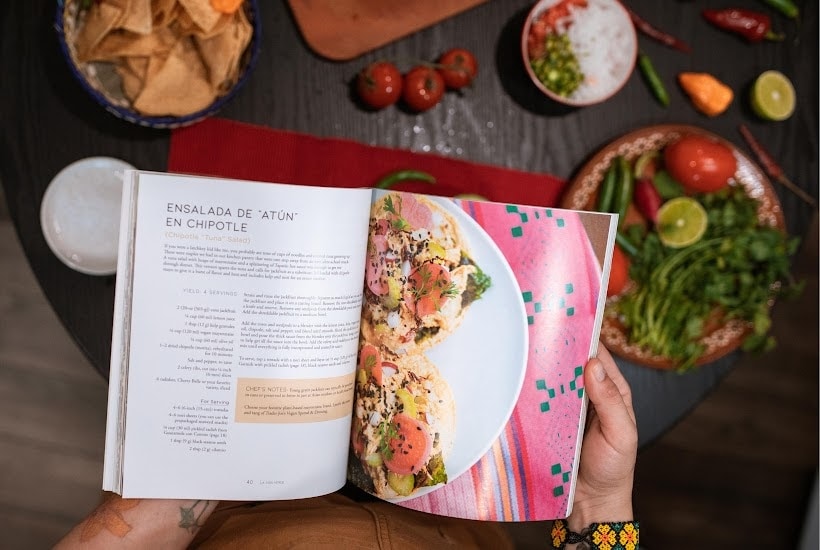
4. Cook Once, Eat Twice
One of the easiest ways to simplify meal planning is to cook a large batch of protein and plan to use it for several meals. Prepare a batch of Easy Meal Prep Chicken or cook up a 2-3 pounds of ground beef over the weekend and use it to jumpstart a couple of your meals. This pre-cooked meat works well in casseroles (Easy Weeknight Chicken Spaghetti), soups, burritos and tacos.

5. Simplify Your Sides
The key to easy menu planning for beginners is to keep meals simple. This includes the coveted side dishes. Don’t put too much stress on yourself by cooking up a great meal with tons of complicated sides.
Instead, keep your side dishes quick-and-easy. A few ideas include:
- Sliced fresh fruit
- Simple roasted veggies
- Green side salads
- Heat and eat rice
- Leftover sides
- Using canned or frozen veggies you have on hand
- A crusty loaf of bread
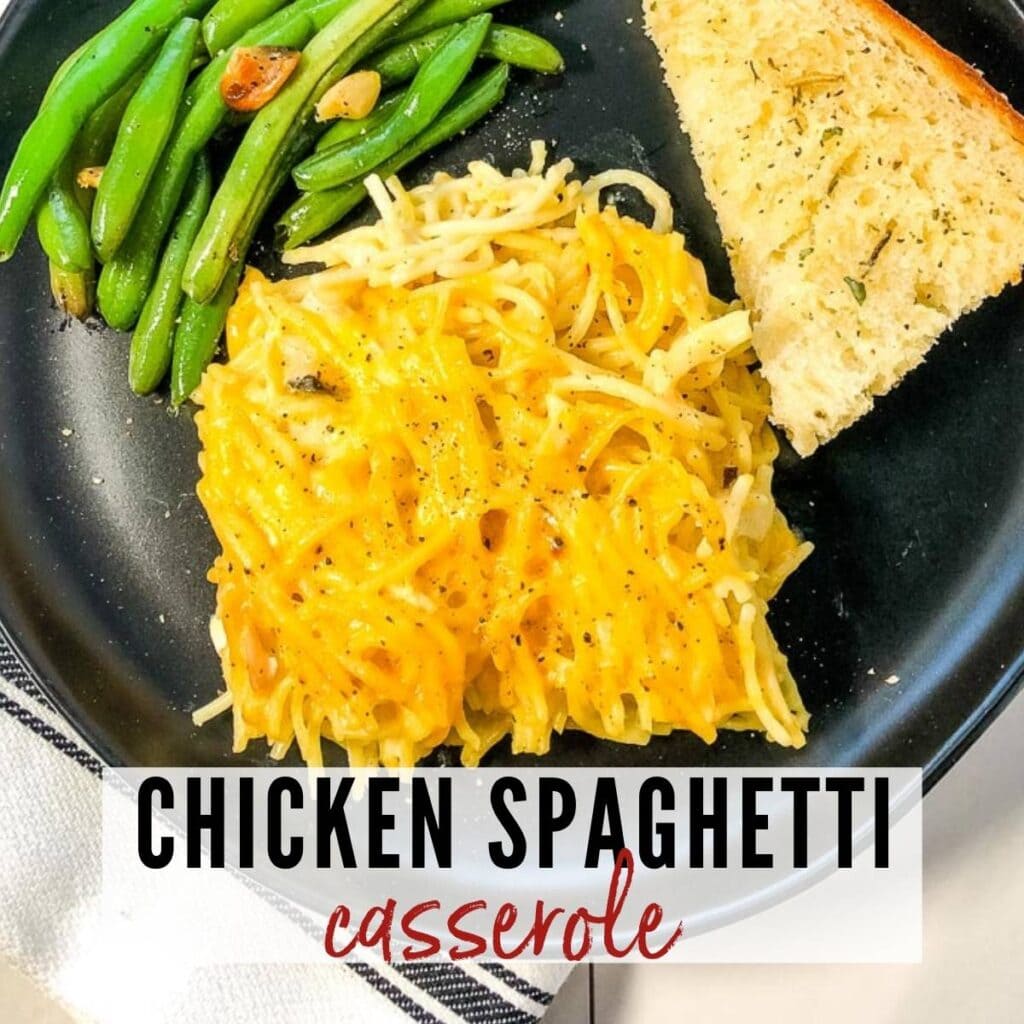
6. Don’t Forget the Family Favorites
One of the easiest ways for beginners to keep up with meal planning is to add a family favorite dish to the menu. You’re more likely to stick to a routine you’re excited about, and meal planning shouldn’t be any different.
Select a quick-and-easy family-friendly meal each week to prepare. It could be something you enjoy cooking or something the family goes ga-ga for. The point is to plan a meal where family members can get on board with your new meal planning routine.
7. Create a Grocery List
Now that you’ve got amazing meal ideas for the week, it’s time to create a shopping list from the recipes.
Grocery lists are an essential tool for sticking to your grocery budget because a list keeps you organized and reduces the temptation to over-spend.
Before you hit the store, be sure to check (and re-check) the fridge, freezer, and pantry. Don’t forget to skip this essential step, since it can save you loads of money over time.
Sometimes I’ll find a quick-and-easy side dish hidden in my freezer or I’ll have an extra can of soup lying around that I forgot about. Checking your pantry first helps you use what you have on hand instead of buying excess at the grocery store.
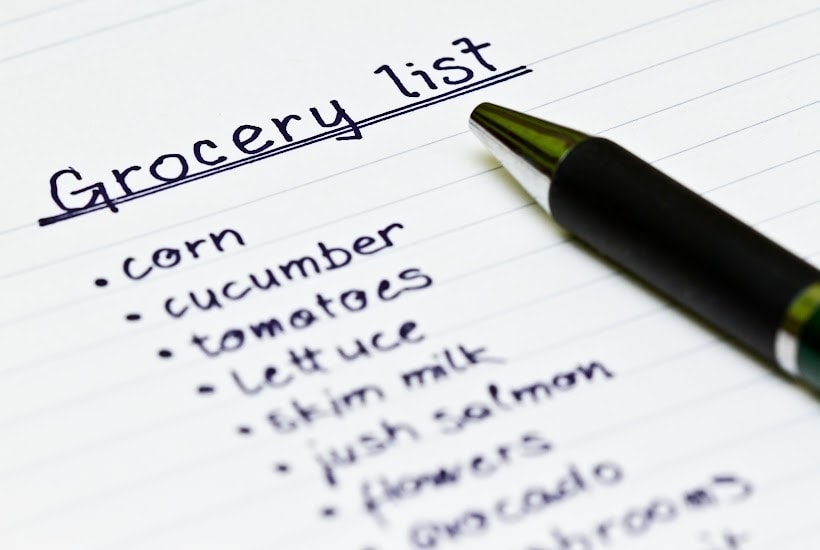
8. Take Simple Meal Planning to the Next Level
After you’ve gotten the hang of this simple meal planning technique, it’s time to level up. First, stick with planning dinners for the first three to four weeks, in order to build up a meal planning habit and mindset.
There’s no wrong way to meal plan, so if you want to cook the same things week-in and week-out, then no pressure. But if you’re like me and you like to whip up something new, then feel free to experiment after you’re comfortable with the process.
Once you’re a meal planning master, feel free to expand the process to lunches and breakfast. You can start by adding one meal type per week.
Another way to expand is to begin to broaden your meal options by trying one to two new recipes a week.
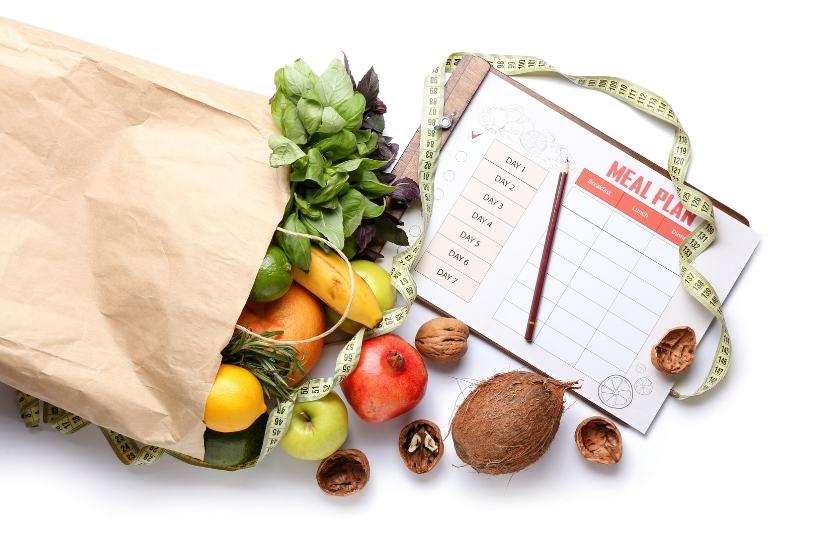
How do you decide what meals to prepare for the week?
Most beginners get hung up on this step and stall out. Don’t overcomplicate it! You’ll want to take into account food preferences and your schedule for the week when determining what meals to prepare for the week.
Begin by assessing your schedule – if you have a busy week, opt for meals that are quick to prepare or can be made in batches and frozen for later use. If you have more time, you can experiment with new, more complex recipes.
You’ll also want to take into account food preferences and try to incorporate a variety of meals to prevent boredom. If you’ve got picky eaters, make sure to include a dish they’ll eat.
If you’re on a budget it can be helpful to look at the weekly sales at your local grocery store so you can plan meals around the most affordable, freshest ingredients available. In-season fruits and vegetables are usually fresher and cheaper.
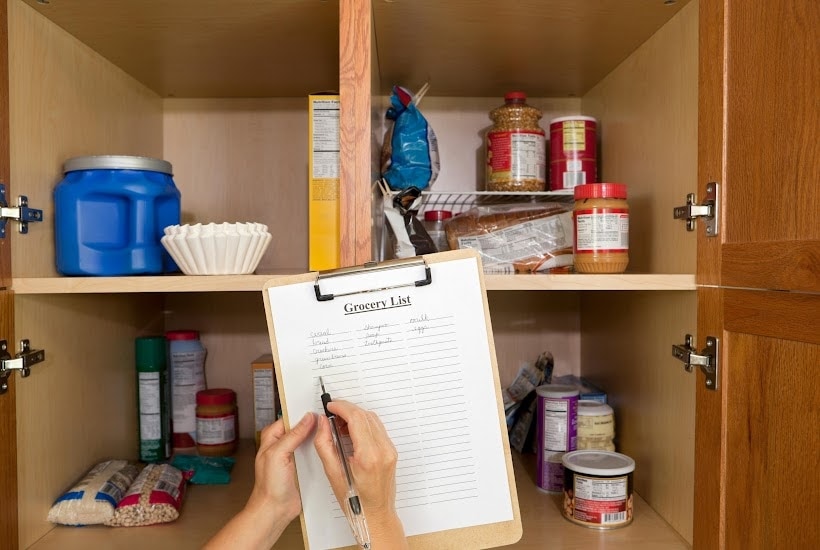
How much time should a beginner set aside for meal planning each week?
The amount of time to set aside each week will vary but it can be done in as little as 15-30 minutes. Your actual time will depend on how complicated you make the process.
Meal planning typically involves deciding the meals for the week and creating a shopping list. Keep in mind the task becomes easier the longer you practice it and become more skilled.
Your grocery shopping time is not included with this estimate. If you’re looking to save time shopping, consider ordering online for delivery or pickup.
What tools or apps can be used to make meal planning easier?
These resources can significantly simplify the meal planning process. Here are a few worth considering:
- Eat at Home – I used this system for a few years and highly recommend it for beginners (and all busy cooks!). They provide a variety of meal plans for different food preferences and family sizes allowing you to customize your menu for the week. The plans come with shopping lists, making this a great done-for-you service. You can try it out for a month or join on a quarterly or yearly basis and cancel at any time.
- Plan to Eat – Plan to Eat helps to plan your meals, generate your shopping list, and even organizes your shopping list by store departments.
- Mealime – This app allows users to create personalized meal plans based on their dietary preferences, allergies, and food dislikes. It offers simple, easy-to-prepare recipes and generates an automatic grocery list based on the chosen meal plan.
- Yummly – this recipe site offers recipe recommendations tailored to your individual tastes, nutritional needs, skill level, and more. It includes a handy shopping list feature and step-by-step recipe instructions.
- Evernote – While not a dedicated meal planning app, Evernote is a versatile note-taking tool that can be effectively used for meal planning. You can use it to store recipes, create shopping lists, and plan your weekly meals.
These tools not only help in organizing and planning meals but also provide you with inspiration for new recipes, thereby adding variety and excitement to your meals.
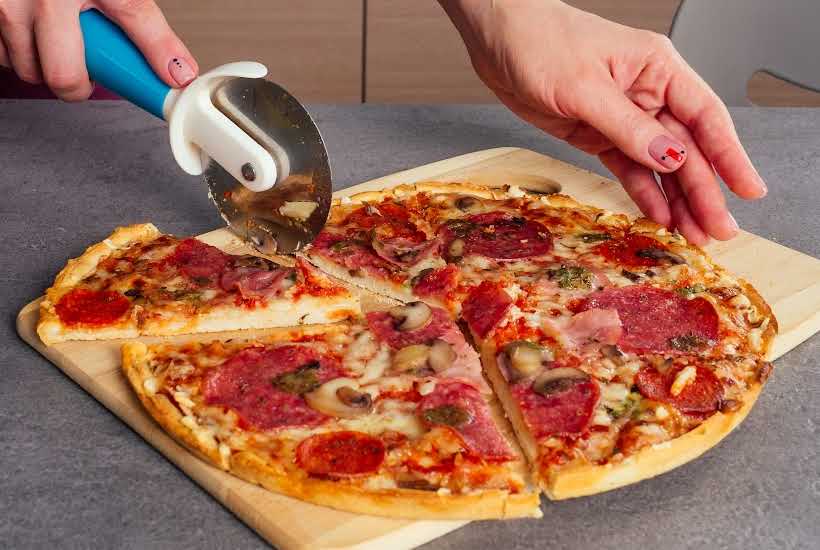
How can I stay motivated and consistent with meal planning?
Like any new habit, consistency is key in making meal planning a successful part of your routine. Don’t be discouraged if you slip up or make mistakes, just keep trying and adjusting until you find what works for you.
- Set realistic goals: Don’t try to plan elaborate meals every night of the week. Start small and gradually build up to a more comprehensive meal plan.
- Get creative: Don’t be afraid to try new recipes or mix things up in your meal plan. This can help prevent boredom and keep you excited about planning and preparing meals.
- Ask for support: enlist the help of family members to help you plan the weekly meals. And giving your teens and children a voice in meal planning is a great way to avoid the “I don’t like that” rant at meal time.
Overall meal planning is designed to make your life easier. With a few quick-and-easy planning steps, you’ll be well on your way to being more efficient in the kitchen.
So what are you waiting for? Get your free printable meal planner and get your menu organized today!
More Posts to Help With Meal Planning
- How to Make Easy Meal Prep Chicken
- Crockpot Taco Meat Recipe
- How to Restock Your Pantry After a Pantry Challenge
- Guide to Cooking Food for Friends in Need
**Save the Beginner Meal Planning Tips for Later**
